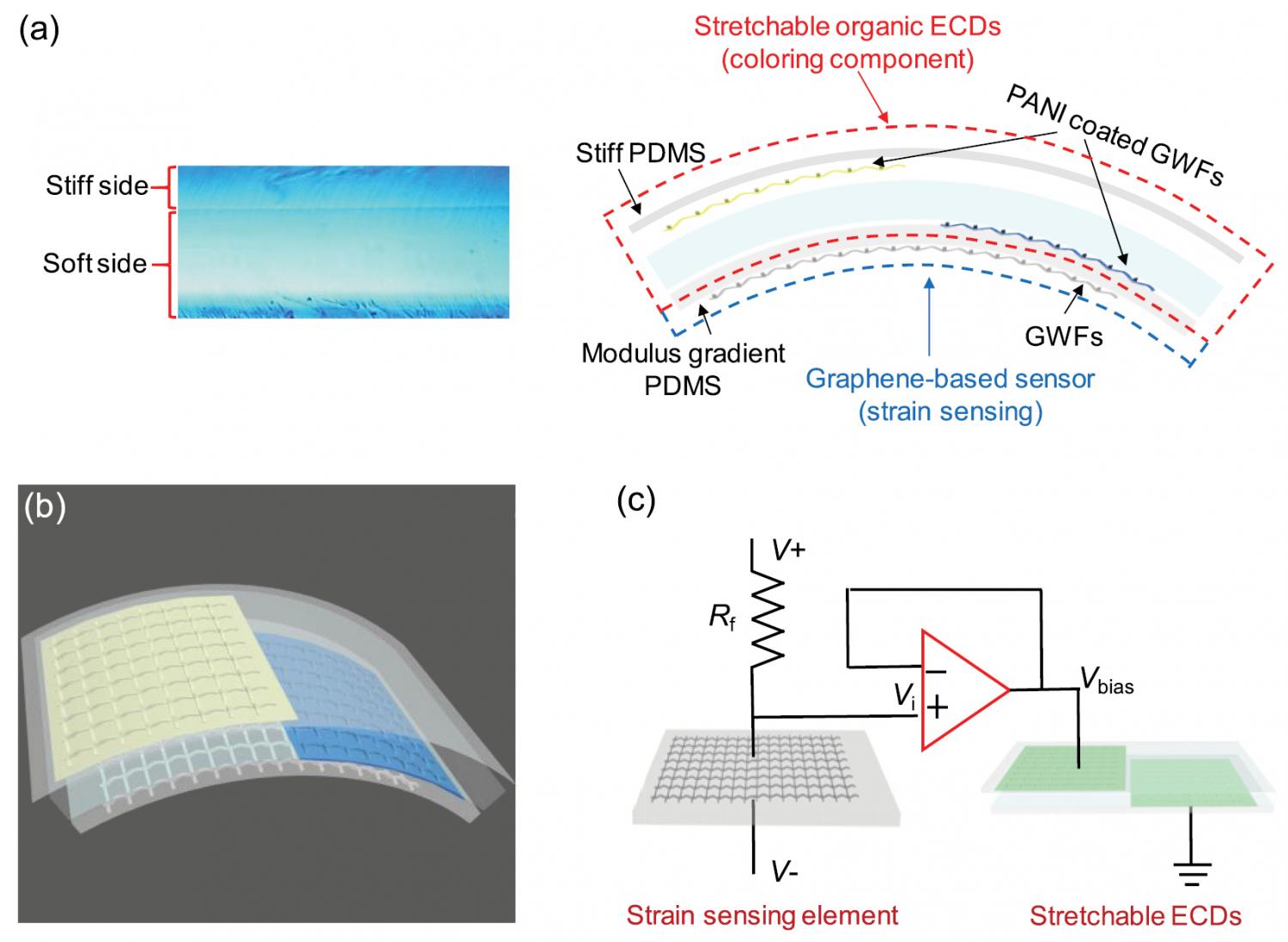
(a) Device structure of the e-skin from the side view, left panel shows the optical image of the modulus-gradient PDMS. (b) 3D model of the e-skin. (c) Schematic of the circuit layout. (Credit: 2D Materials, 2017)
The ability of some animals, including chameleons, octopus, and squid, to change their skin colour for camouflage, temperature control, or communication is well known.
While science has been able to replicate these abilities with artificial skin, the colour changes are often only visible to the naked eye when the material is put under huge mechanical strain.
Now, however, researchers in China have developed a new type of user-interactive electronic skin, with a colour change perceptible to the human eye, and achieved with a much-reduced level of strain. Their results could have applications in robotics, prosthetics and wearable technology.
Published today in the journal 2D Materials, the study from Tsinghua University in Beijing, employed flexible electronics made from graphene, in the form of a highly-sensitive resistive strain sensor, combined with a stretchable organic electrochromic device.
Lead author Dr Tingting Yang, from Tsinghua University, said: “We explored the substrate (underlying) effect on the electromechanical behaviour of graphene. To obtain good performance with a simple process and reduced cost, we designed a modulus-gradient structure to use graphene as both the highly sensitive strain-sensing element and the insensitive stretchable electrode of the ECD layer.
“We found subtle strain – between zero and 10 per cent – was enough to cause an obvious colour change, and the RGB value of the colour quantified the magnitude of the applied strain.”
Senior author Professor Hongwei Zhu said: “Graphene, with its high transparency, rapid carrier transport, flexibility and large specific surface area, shows application potential for flexible electronics, including stretchable electrodes, supercapacitor, sensors, and optical devices.
“However, our results also show that the mechanical property of the substrate was strongly relevant to the performance of the strain sensing materials. This is something that has previously been somewhat overlooked, but that we believe should be closely considered in future studies of the electromechanical behaviour of certain functional materials.”
Dr Yang said: “It’s important to note that the capability we found for interactive colour changes with such a small strain range has been rarely reported before. This user-interactive e-skin should be promising for applications in wearable devices, robots and prosthetics in the future.”




